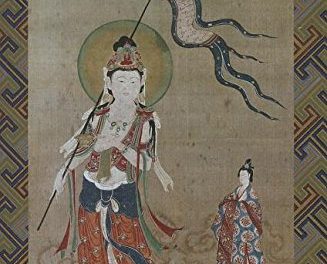Author: John Haywood
Publisher: Princeton University Press – 252 pages
Book Review by: Paiso Jamakar
This large, colorful book provides the reader with a wondrous text-and-pictorial voyage through not just history but of pre-historic times as well. It takes you through the most significant events in our past while enabling you to actually look at people and things that symbolized them.
The quality of production of this gorgeous tome amazed me at first glance and handling. To say that it is professionally designed and manufactured would be an understatement. The thick, strong cover, the exquisite coated paper, the beautiful graphics inside – of the maps, the photos of artifacts, objects, people – are so incredibly stunning.
It is said that a picture is worth a thousand words, and with the hundreds of photos in this book, not much has to be written for the reader to learn a lot just by turning the pages and looking at numerous images on the right side. But the author John Haywood also provides you the accompanying stories and descriptions on the left pages as you delight yourself with the illustrations on the right.
And, he answers questions that pop up in your mind as you look at the graphics. For example right after his Introduction, John Haywood starts with the pre-historic period of six million to 100,000 years ago with the topic: “The Origins and Distribution of Early Human Species.”
You ask yourself: Why start at six million years ago? Because, based on DNA evidence, humans evolved somewhere between eight million and six million years ago. That happened in East Africa, as ancestors of humans started to evolve separately from the great apes. Over time, our prehistoric forefathers developed brains larger than our earlier ancestors. That pretty much explains the vast difference in the lives of people and apes.
I’ve wondered how and when humans moved to different continents and land masses
If you look at the next section in this book covering the period between 100,000 and 11,000 years ago, you will be amazed to see that at one time during that period known as the Ice Age, all the continents were connected, and our ancestors could have walked from Africa to other parts of the globe.
One map shows possible human movement south from Alaska to Canada to the United States, through Mexico and Central America to South America and all the way to the tip of this single land mass, which later separated and the southernmost part of which is now known as Latin America. Some walked east to Europe and Asia and elsewhere.
John Haywood points out the most important events in human history in the book.
Around 6,000 years before Christ (BC), much of the ice had melted, the author writes, and with a warmer climate, agriculture began. This was a pivotal point in the evolution of humans as hunting began to be replaced by farming. Farming enabled 500 people to live on a single square kilometer of land, around 20 times what was previously possible: just 25 people.
Human population grew rapidly at this time, Haywood writes. And I presume, with our ancestors not having to be preoccupied to go hunt for, or grow food to feed themselves, their minds turned to how to make life easier to live.
Creativity blossomed in this period and many agricultural tools and implements were developed. Then, pottery came about, which led to many utensils for cooking, storing and eating food. With basic food needs satisfied, human minds turned to clothing and looms came into being. Gold and other metals were mined and accumulated. This led to the development of social classes.
Writing, man’s most important cultural development, was invented, with the first version – the Sumerian pictographic script – appearing in 3400 BC.
The book continues with subsequent milestones that marked human history and how those milestones enhanced human life and hastened human progress.
This is the best work I have come across that not only depicts human history pictorially but also provides a comprehensive view of the evolution of the human species, our geographical spread around the globe, important events in our past and our situation today in terms of balance of power among nations.
John Haywood has done a wonderful job with The New Atlas of World History. He is an honorary research fellow in the department of history at Lancaster University. His other books include: The Great Migrations: From the Earliest Humans to the Age of Globalization, The Penguin Historical Atlas of Ancient Civilizations, The Penguin Historical Atlas of the Vikings, and The Historical Atlas of The Celtic World.






